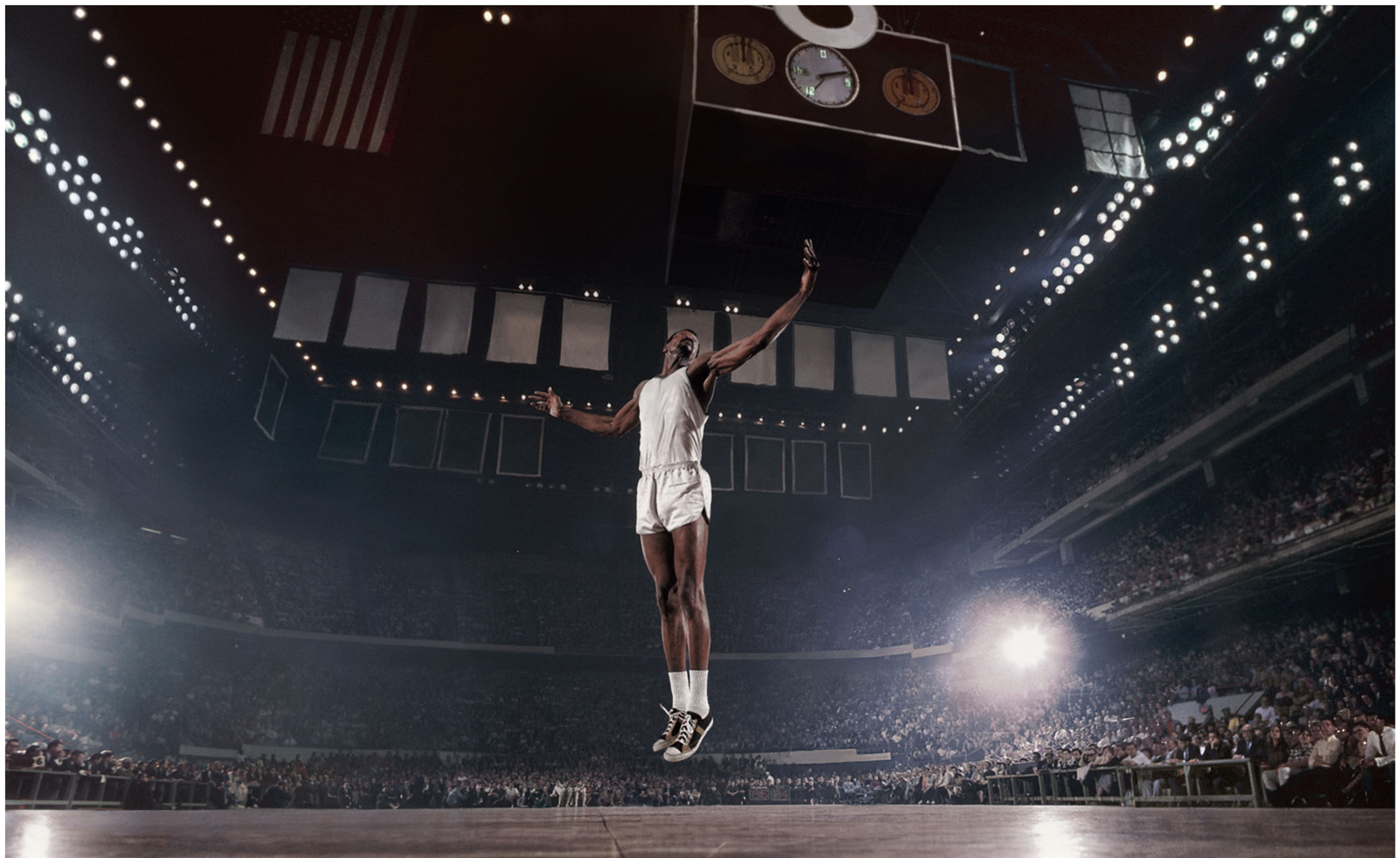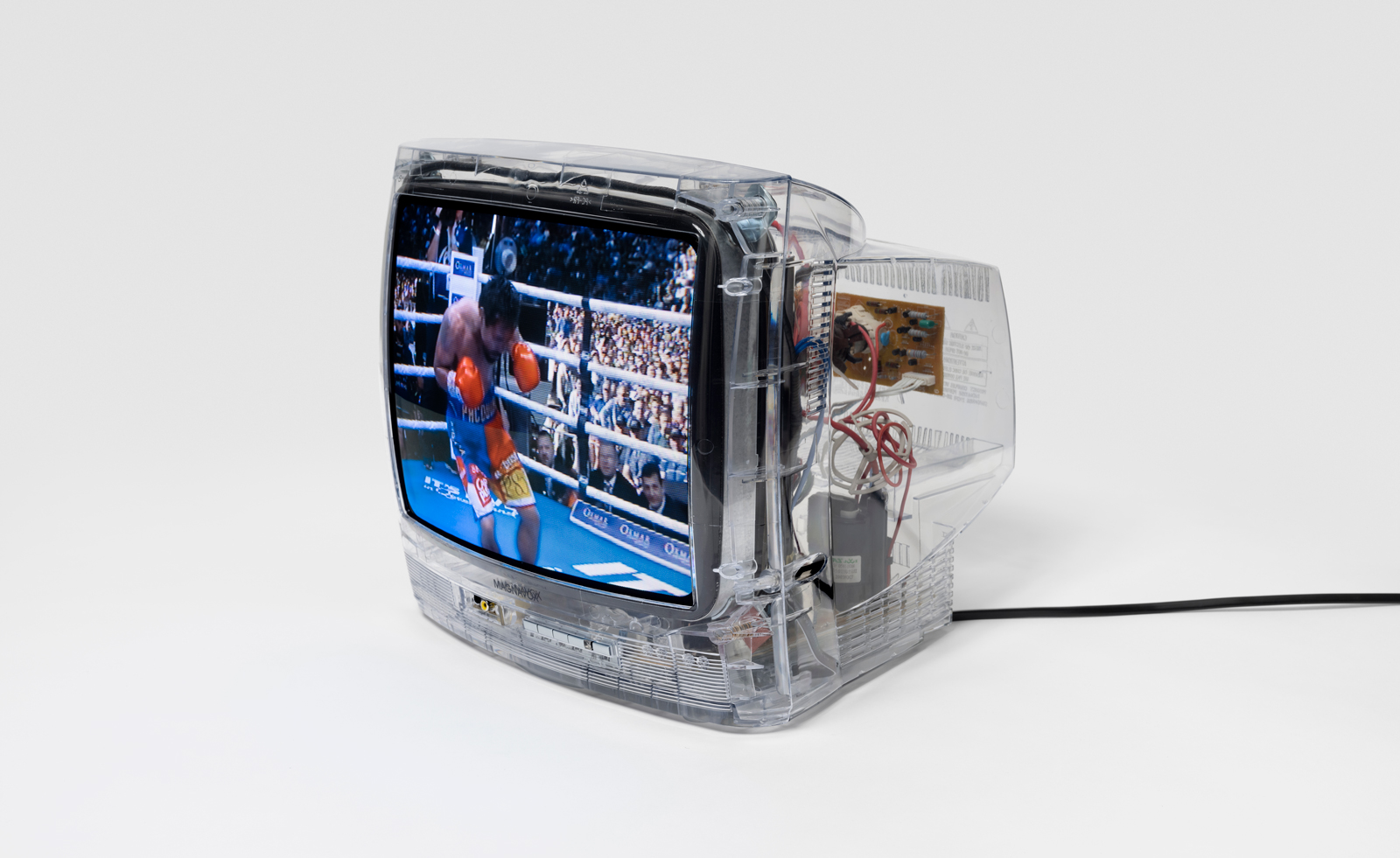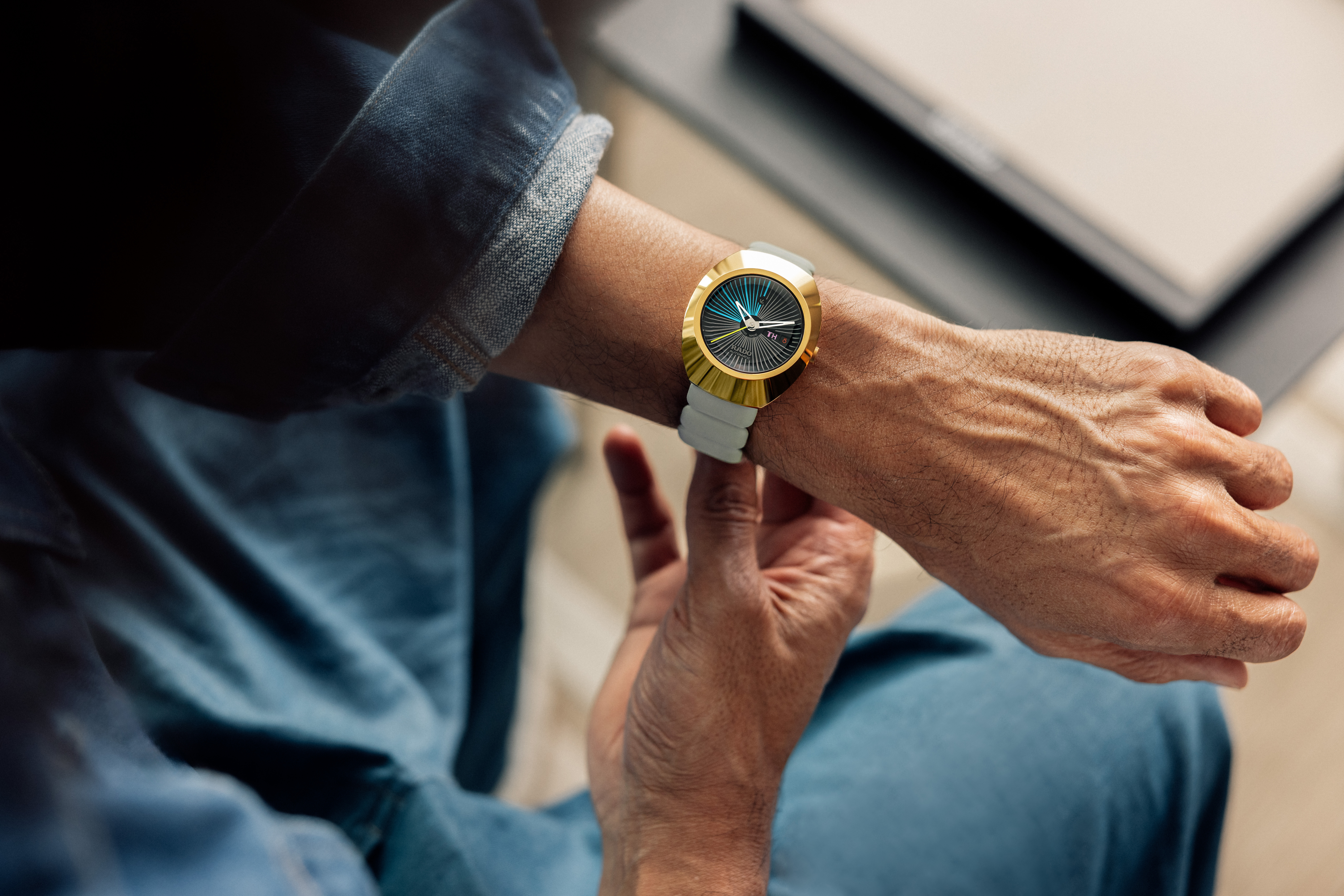Paul Pfeiffer's digital image manipulations in LA dissect celebrity culture
The first US retrospective of multi-disciplinary artist Paul Pfeiffer’s work opens in LA at The Museum of Contemporary Art, candidly exploring modern society in the digital age

“The question always comes up: who’s using who? Is the image making us, or do we make images?” asks Paul Pfeiffer in Prologue to the Story of the Birth of Freedom. At times disquieting and at others downright creepy, but always powerful, the work on show at LA’s MOCA Geffen marks 25 years of Pfeiffer’s multi-disciplinary practice and is a fascinating survey of the Filipino American artist’s work in digital imagery.
Interrogating ideas of spectacle, belonging and identity, the curators at MOCA, Clara Kim and Paula Kroll describe the retrospective as exploring “the complex intersections of worship, obsession, and desire that shape mass culture and manipulate our collective consciousness.”

Caryatid (Mayweather), 2023. Digital video (color, silent; 1:08 minutes) and custom CRT monitor
Across sculpture, video, room-size installations and large-format photography, the artist takes on big and timely themes. Mining imagery and found footage from our media-saturated world, from televised sporting events, Hollywood films and entertainment, Pfeiffer uses iterative and meticulous acts of digital manipulation – cutting, splicing, erasure and cloning – to deconstruct the allure of celebrity culture and to unpack the ideas shaping our shared memories and repressed desires.
In ‘The Long Count’ (2000–01), Muhammed Ali’s most famous boxing matches are featured in a trilogy of video works using archival broadcast footage. The viewer can see the crowd react to the matches, but the fighters have been digitally erased, leaving visual imprints on the film as ghostly, shadow-like figures.
‘Three Figures in a Room’ (2015-18) features a recreation of the ‘fight of the century’ between Floyd Mayweather and Manny Pacquiao. Two large screens are shown side-by-side; the first displaying the fight played without sound. The second features two audio technicians, known in post-production as Foley Artists, recreating the dull thuds of human flesh being punched as they match the live sound effects.

Paul Pfeiffer, Justin Bieber Head, 2018, Gmelina wood and paint
A highlight is the series ‘Four Horsemen of the Apocalypse’ (2000-ongoing), its name a reference to the prophecy of triumph and submission from the New Testament Book of Revelation. In a 2015 edition, a Black NBA player is photographed from below, hovering alone in space in the middle of an enormous stadium packed with spectators. Arms extended like a crucifixion, his face is obscured and his uniform shows neither a team nor number – he is resolutely anonymous. Recalling religious martyrs, the series of large format digital C-prints explores the parallels between sports fandom and hero worship.
Modelled after a studio soundstage, the installation design was a collaboration between Pfeiffer and architecture firm Büro Koray Duman. Rooms are built inside the museum’s cavernous warehouse space, referencing the heavily fabricated and labour-intensive process of Hollywood filmmaking.
Receive our daily digest of inspiration, escapism and design stories from around the world direct to your inbox.
The metal braces and exposed 2-by-4s left flagrantly raw and exposed, add contrast between analogue and digital and provide a savvy backdrop for the architectural installations, such as Vitruvian Figure’ (2008). Here, visitors climb a stage set to reach the nosebleed level atop an enormous model of a million-seat arena, inspired by the Sydney Olympic stadium, today’s version of Rome’s Colosseum.

Paul Pfeiffer, Three Figures in a Room, 2015–18 Two-channel digital video with four audio channels (color, sound; 48:00 minutes) and acoustic foam. Installation view, Paul Pfeiffer, Paula Cooper Gallery, October 13 – December 17, 2016.
“In Pfeiffer’s universe, the boxing ring, the basketball court and the stadium serve not only as platforms for grand spectacles, but as sites where the body politic (of a nation, of a community, of society) is defined and contested,” says Kim.
The chill of mass media indoctrination and questions of how nationalism manifests in moments of sports history are captured in ‘The Saints’ (2007), a deafening soundscape of the controversial 1966 World Cup Final at Wembley between England and West Germany. Entering a large white room, empty except for a series of vertical speakers, the invisible roars of the German and British fans are recreated with the help of over a thousand people in Manila, who gathered in a cinema to watch footage of the iconic game.
Here, the acoustics of the crowd become the most significant component in the construction of a collective experience and sense of belonging. On a freestanding wall at the far end of the room is a tiny LCD screen, on which a single player – identity obscured – is shown roaming the field at Wembley.

Paul Pfeiffer, Fragment of a Crucifixion (After Francis Bacon) (still), Video installation (color, silent, 0:05 minutes looped), with projector and mounting arm
Elsewhere, MOCA commissioned Pfeiffer to expand on his ‘Incarnator’ series (2018–ongoing). Working with a team of encarnadores (from the Spanish ‘flesh coloured’), these artisans produce painted, life-size wooden sculptures, typically used as religious icons in Catholic churches. The new works are modelled after LA resident Justin Bieber and transform the pop star’s dismembered limbs, torso and head, into a contemporary embodiment of Jesus Christ.
Indeed, Pfeiffer’s choice of location could not be more pertinent “Set in the entertainment capital of the world, a city singularly poised to create – and manipulate – dreams, symbols, and mythologies, this show will have deep resonance here,” says Johanna Burton, The Maurice Marciano Director of MOCA.
The retrospective will be accompanied by a full-colour monographic catalogue, co-published by the museum and MACK Books, available from March 2024.
‘Paul Pfeiffer: Prologue to the Story of the Birth of Freedom’ is on view until 16 June 2024; Closed Mondays

Paul Pfeiffer, Morning After the Deluge (still), 2003, Video projection (color, silent)
Timothy Anscombe-Bell runs Sustainable Design Collective (SDC), a Los Angeles based design resource and consultancy, bringing together some of the brightest in modern craft-based manufacturing. He works on healthy, sustainable and green building schemes – from offices, cultural institutions, schools and universities, to hotels, restaurants and specialist retail. @sdc_inc
-
 Explore the work of Jean Prouvé, a rebel advocating architecture for the people
Explore the work of Jean Prouvé, a rebel advocating architecture for the peopleFrench architect Jean Prouvé was an important modernist proponent for prefabrication; we deep dive into his remarkable, innovative designs through our ultimate guide to his work
-
 'I wanted to create an object that invited you to interact': Tej Chauhan on his Rado watch design
'I wanted to create an object that invited you to interact': Tej Chauhan on his Rado watch designDiastar Original which Rado first released in 1962 has become synonymous with elegant comfort and effortless display of taste. Tej Chauhan reconsiders its signature silhouette and texture on the intersection of innovation and heritage
-
 High in the Giant Mountains, this new chalet by edit! architects is perfect for snowy sojourns
High in the Giant Mountains, this new chalet by edit! architects is perfect for snowy sojournsIn the Czech Republic, Na Kukačkách is an elegant upgrade of the region's traditional chalet typology